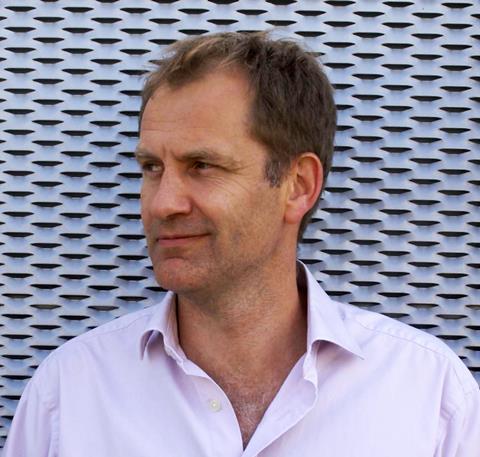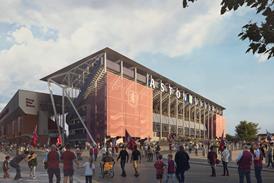Paul Vick on why we need to rethink the meaning of profitability and value to better reflect the real challenges of the environmental crisis

I sometimes wonder, “What is the fuss about creating sustainable buildings? We have had off-grid homes and cities for centuries in climates wetter, colder, and hotter than the UK.”
Key to our approach is rethinking the meaning of profit and value. We believe that profit extends far beyond short-term financial gains. It’s a concept that must also encompass the impact of architecture on the environment.
We are not strangers to these complexities. Since I founded the practice 17 years ago, we have undertaken low-energy new builds and retrofits (Passivhaus approaches) and are currently working on a 22-acre and a 5-acre regeneration project. Our projects include designing sustainable workspaces, such as a global telecoms HQ in London, mixed-use developments, and a vision document for the Diocese of London.
We strive to bring the same clarity to concept and technical detail that I experienced working for Michael Hopkins for five years and Ian Ritchie for 4.5 years. At the latter, I was fortunate enough to be the project managing architect for White City at Shepherd’s Bush, as well as having responsibility for drafting the British Museum space plan and an 8,000-home zero-carbon development.
In seeking answers to “why we are where we are” and “why we are doing what we are,” growth—of population, capital, commodity, and resource use—is a good place to start. While growth in itself is not inherently bad, we live in a finite world with finite resources and limited capacity for waste removal. Today, we are at high risk regarding Planetary Boundaries (updated in 2023) concerning nitrogen, biodiversity, and climate change.
Human development factors (food deprivation, health, gender equality, political voice, housing, etc.) form the inner boundary, and, together with the Planetary Boundaries, are explored in detail in Kate Raworth’s 2017 book, Doughnut Economics. These are reflected in benchmarks, including the United Nations Sustainable Development Goals.
Innovation is not just about the lever but what you do with it
In our pursuit of economic growth, we cannot ignore the long-term loss of biodiversity or the risks of exceeding the sustainable limits of Earth’s resources. True profit must be measured in terms of sustainability and the well-being of future generations, not just immediate financial returns.
Despite the recovery of the ozone layer and significant strides in alleviating absolute poverty over the last 40 years, there is still a long way to go. The 1987 Brundtland Report identified that technological challenges are minor compared to the political and economic ones in achieving sustainability.
The longer we wait, the more expensive it will be in every respect. Numerous studies over the past 50 years have detailed the cost of climate change, and only recently have political will and economic incentives started to align. We are all in this together—from local to global levels.
London, for example, is expected to grow by the equivalent of eight City of Yorks over the next 25 years, with its population estimated to reach 11.5 million by 2050, up from 8.9 million in 2022—a 29% increase—along with greater connectivity expanding its reach.
We are all front and centre of our stages as forces for change. When working with Innovation Warehouse and the City of London at Smithfield to create what we believe was the first functional co-working innovation hub in the UK, we described innovation as the “giving of value to knowledge.” The importance of innovation and new business to the survival of cities is essential. Ideas from urbanist Jane Jacobs and economist Schumpeter have become a cross-party approach.
With our clients, we look at development themes holistically rather than focusing on single issues, seeking alignment between economic and climate challenges. For new builds and retrofits, this often means “Do not build what you do not need,” a principle not always reflected in benchmarks. Our project approaches link urban thinking to the granular delivery of architecture, drawing on experience from both scales. When one type of thinking is isolated from the other, opportunities are missed, and unnecessary waste (of money, resources, connectivity, and belonging) occurs.
From the start, our practice’s aim has been “to make life flourish.” We also ask, “What is the value of a building that helps you live longer?” across all sectors. This holistic view of profit and value is essential. Short-term financial profit cannot compensate for long-term environmental degradation. The value of our work must be judged by its contribution to a sustainable future, ensuring that our architectural endeavours do not compromise the planet’s health or the well-being of future generations.
Innovation is not just about the lever but what you do with it. People, places, lives, buildings, infrastructures, and economies have context and complexity. We can all keep giving value to our knowledge, even if it is not always straightforward at the boardroom table, and this should give us hope, motivation, and intention.
Postscript
Paul Vick is the founder of Paul Vick Architects.
This article is an edited version of a lecture given as part of the 695th Lord Mayor’s lecture series on 24 May.
The full talk with project examples is available here.
















1 Readers' comment